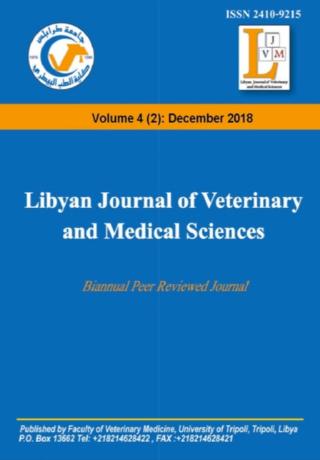Clinical, radiological, and pathological findings of primary nasal osteosarcoma in a Libyan cat
Abstract
Background: Although bone tumors are common pathologies in companion animals, limited reports describe nasal
osteosarcoma (OSA) in cats.
Case description: A case of nasal OSA in a local Libyan cat was admitted to the Veterinary Teaching Hospital at the
Faculty of Veterinary Medicine, University of Tripoli–Libya, with nasal swelling and discharges and facial deformity.
The radiological findings revealed nasal osteolysis with the absence of evidence of lung metastasis. In addition, fungal
growth was not identified in microbiological culture. Furthermore, the pathological examination has grossly revealed
a destructed nasal bone due to the presence of a tumor mass, with a mucohemorrhagic nasal discharge and absence of
metastasis. OSA was confirmed histopathologically.
Conclusion: This report presents the clinical, radiological, and pathological findings of a primary nasal OSA in a
Libyan cat with no tumor metastasis to other body organs.
Keywords: Cat, Nasal cavity, Primary osteosarcoma.
Mohamed Hamrouni S. Abushhiwa, Seham AL-Abed Hassan AL-Azreg, ٍٍSamer Khalifa Khalil Tmumen, Abdulrhman Mohamed Salah Alrtib, Abdulkareem Khalifa Ali Elbaz, Mahir A. Kubba, Al-Asayed R. Al-Attar, Emad M R Bennour(1-2019)
Publisher's website






